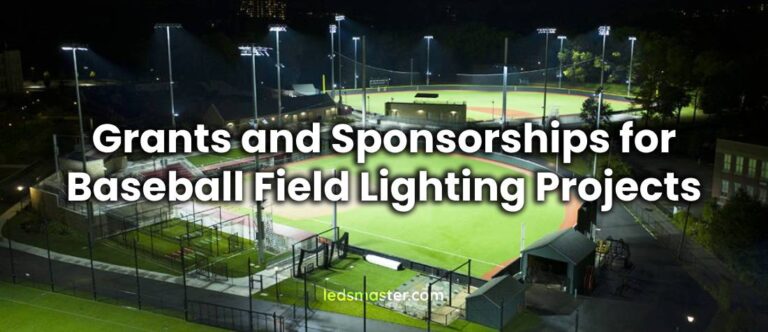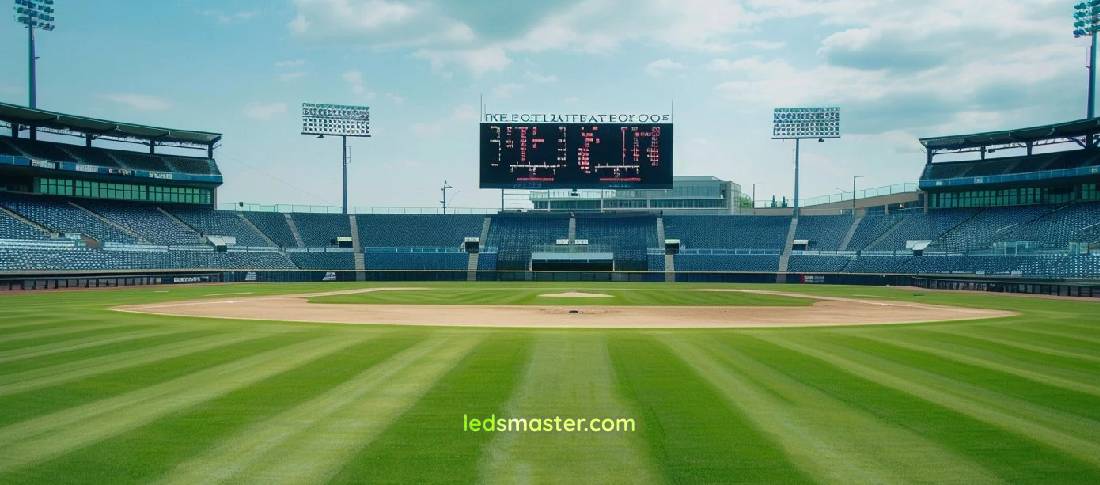
From purchasing and installation to ongoing maintenance, we break down every expense involved. Whether you’re installing new lights or upgrading your existing system, this guide will help you understand and manage the costs to ensure your field is brilliantly illuminated and budget-friendly.
Get your complimentary lighting design today
Investing in quality baseball field lighting is a smart move for any venue. This section provides a clear breakdown of the costs involved in purchasing, installing, and maintaining your lighting system. With our insights, you can make informed decisions that maximize your budget while ensuring top-notch visibility for players and fans alike.
Lighting a baseball field involves significant investment but is crucial for safe and enjoyable gameplay, especially for evening matches. This article will explore the various costs associated with baseball field lighting, including the cost of buying lights, materials, labor, installation, and maintenance. Additionally, it will provide insights on how to save on costs effectively. A comprehensive table detailing the cost categories and estimated prices in USD will also be included.
Table of Contents
Toggle| Cost Category | Estimated Price (USD) |
|---|---|
| LED Lights | $60,000 – $240,000 |
| Metal Halide Lights | $40,000 – $150,000 |
| Poles | $12,000 – $60,000 |
| Wiring and Control Systems | $5,000 – $20,000 |
| Labor | $10,000 – $50,000 |
| Site Preparation | $5,000 – $15,000 |
| Mounting and Electrical Connection | $20,000 – $50,000 |
| Permits and Approvals | $1,000 – $5,000 |
| Consultation Fees | $5,000 – $15,000 |
| Energy Costs | $5,000 – $20,000 annually |
| Routine Inspections and Cleaning | $1,000 – $3,000 annually |
| Repairs and Replacements | $2,000 – $10,000 annually |
The primary expense in lighting a baseball field is the cost of the lighting fixtures themselves. The choice of lighting—typically between LED and metal halide lights—affects both initial and ongoing costs. LED lights, although more expensive upfront, offer greater energy efficiency and longer lifespans compared to metal halide lights.
LED fixtures for baseball fields can range from $1,500 to $4,000 per light. For a standard baseball field, which might require 40 to 60 lights, the total cost can range from $60,000 to $240,000.
Metal halide fixtures are less expensive initially, ranging from $1,000 to $2,500 per light. For the same number of lights (40 to 60), the total cost would be between $40,000 and $150,000.
In addition to the lights themselves, several other materials are needed, including poles, wiring, and control systems. The cost of these materials varies based on the size of the field and the complexity of the lighting system.
The cost of poles varies depending on their height and material. Steel poles are commonly used and can cost between $2,000 and $6,000 each. A standard baseball field may require 6 to 10 poles, leading to a total cost of $12,000 to $60,000.
Wiring and control systems are essential for the operation of the lighting system. The cost for these components can range from $5,000 to $20,000, depending on the complexity and the need for advanced control features.
Labor costs for installation include electricians, construction workers, and engineers. These costs can vary widely depending on the location and complexity of the installation, typically ranging from $10,000 to $50,000.

Installation costs are a significant part of the overall expense and include site preparation, mounting the poles and lights, and connecting the electrical systems. The installation process can be labor-intensive and time-consuming, often requiring specialized equipment.
Preparing the site involves clearing the area, ensuring the ground is level, and creating foundations for the poles. This can cost between $5,000 and $15,000.
Mounting the lights on the poles and connecting the electrical systems is the most labor-intensive part of the installation. This process can cost between $20,000 and $50,000, depending on the complexity.
Before installation, it is necessary to obtain the required permits and approvals from local authorities. This ensures that the installation complies with local regulations and safety standards. The cost of permits can vary widely depending on the location and the specific requirements of the local government. On average, permit fees can range from $1,000 to $5,000.
Hiring experts to design the lighting layout and ensure compliance with standards can incur additional costs. Professional consultation ensures that the lighting system is optimized for performance and safety. The cost for hiring lighting consultants and engineers can range from $5,000 to $15,000, depending on the project’s complexity and the level of expertise required.
The ongoing cost of powering the lights is a significant consideration. Energy costs can vary depending on the type of lighting used and the local cost of electricity. LED lights are more energy-efficient and consume less power than metal halide lights, leading to lower energy bills. The average annual energy cost for lighting a baseball field can range from $5,000 to $20,000, depending on usage and local electricity rates.
Maintaining a baseball field lighting system is crucial to ensure its longevity and optimal performance. Maintenance costs can include routine inspections, cleaning, and occasional repairs or replacements.
Regular inspections and cleaning are essential to keep the lighting system in good working order. Annual maintenance can cost between $1,000 and $3,000.
Over time, components such as bulbs or control systems may need repair or replacement. The cost for these repairs can vary, typically ranging from $2,000 to $10,000 annually, depending on the age and condition of the system.
There are several strategies to reduce the overall cost of lighting a baseball field without compromising quality and performance.
Opting for LED lights over traditional metal halide lights can lead to significant long-term savings due to lower energy consumption and longer lifespan, reducing both energy bills and replacement costs. Various grants and funding opportunities are available for sports facilities looking to upgrade their lighting systems. Researching and applying for these can offset some of the initial costs.
Efficient planning and design can minimize unnecessary expenses. Working with experienced professionals to design the lighting system can ensure optimal placement and performance, reducing the need for costly adjustments later. Buying lighting fixtures and materials in bulk can often lead to discounts and lower per-unit costs. Investing in regular maintenance can prevent costly repairs and extend the lifespan of the lighting system, ultimately saving money in the long run.
Lighting a baseball field is a significant investment that involves various costs, including the purchase of lights, materials, labor, installation, and maintenance. While the initial expenses can be substantial, there are numerous strategies to save on costs, such as choosing energy-efficient lighting, seeking grants, and ensuring regular maintenance. By carefully considering all these factors, one can ensure a well-lit, safe, and enjoyable baseball field that meets all necessary standards and provides an optimal environment for players and spectators alike.